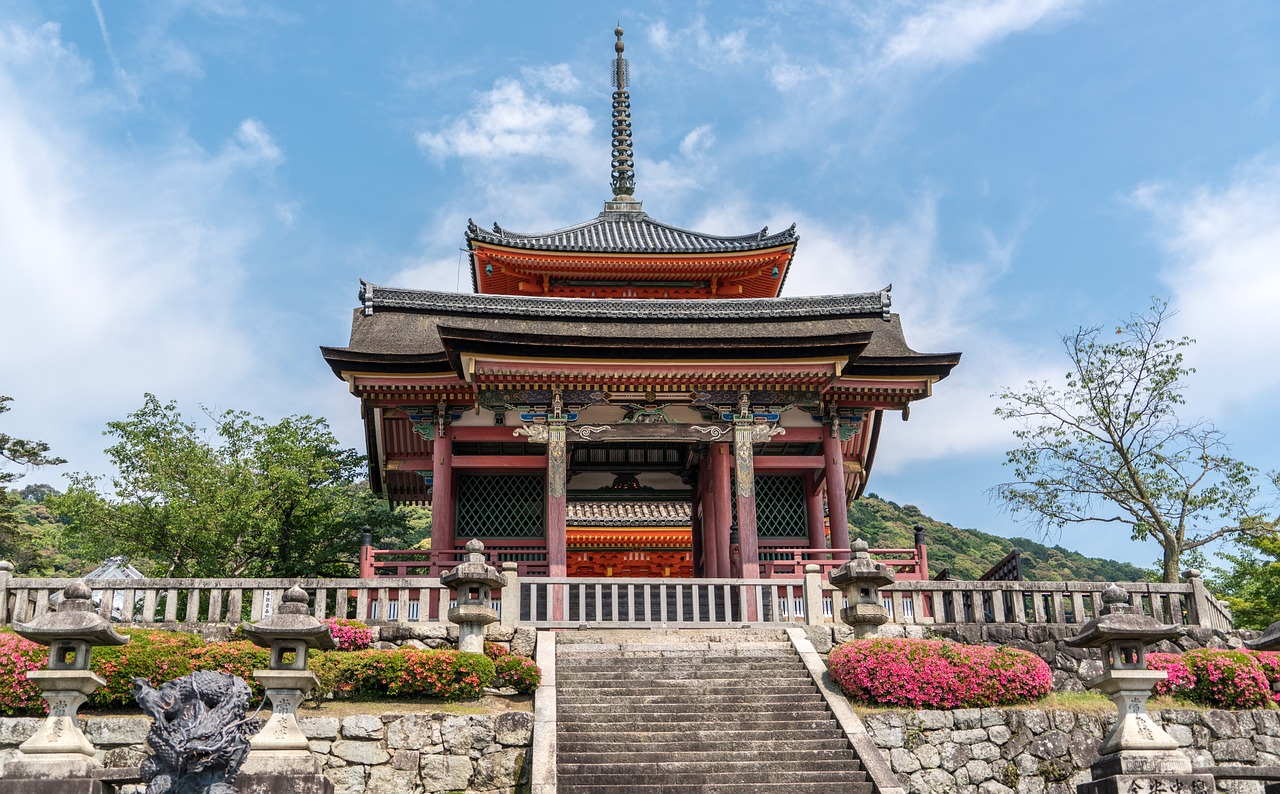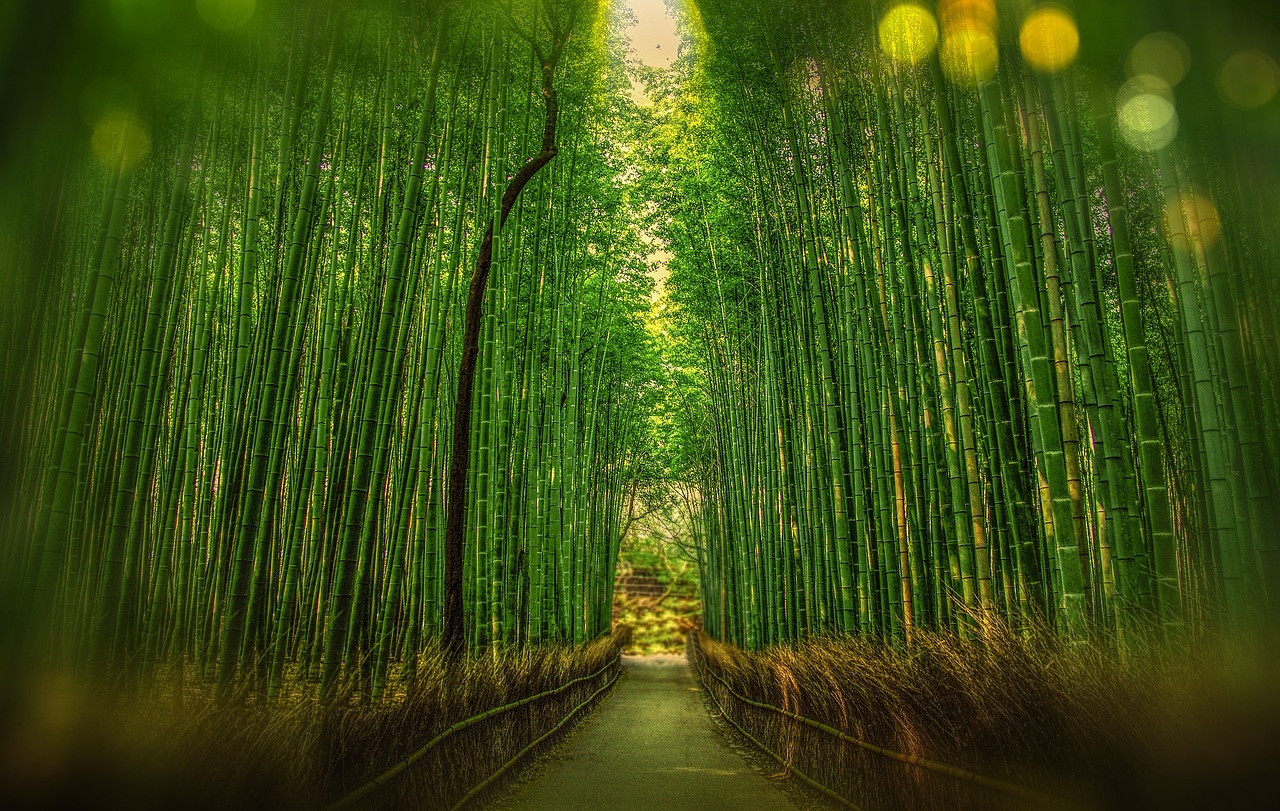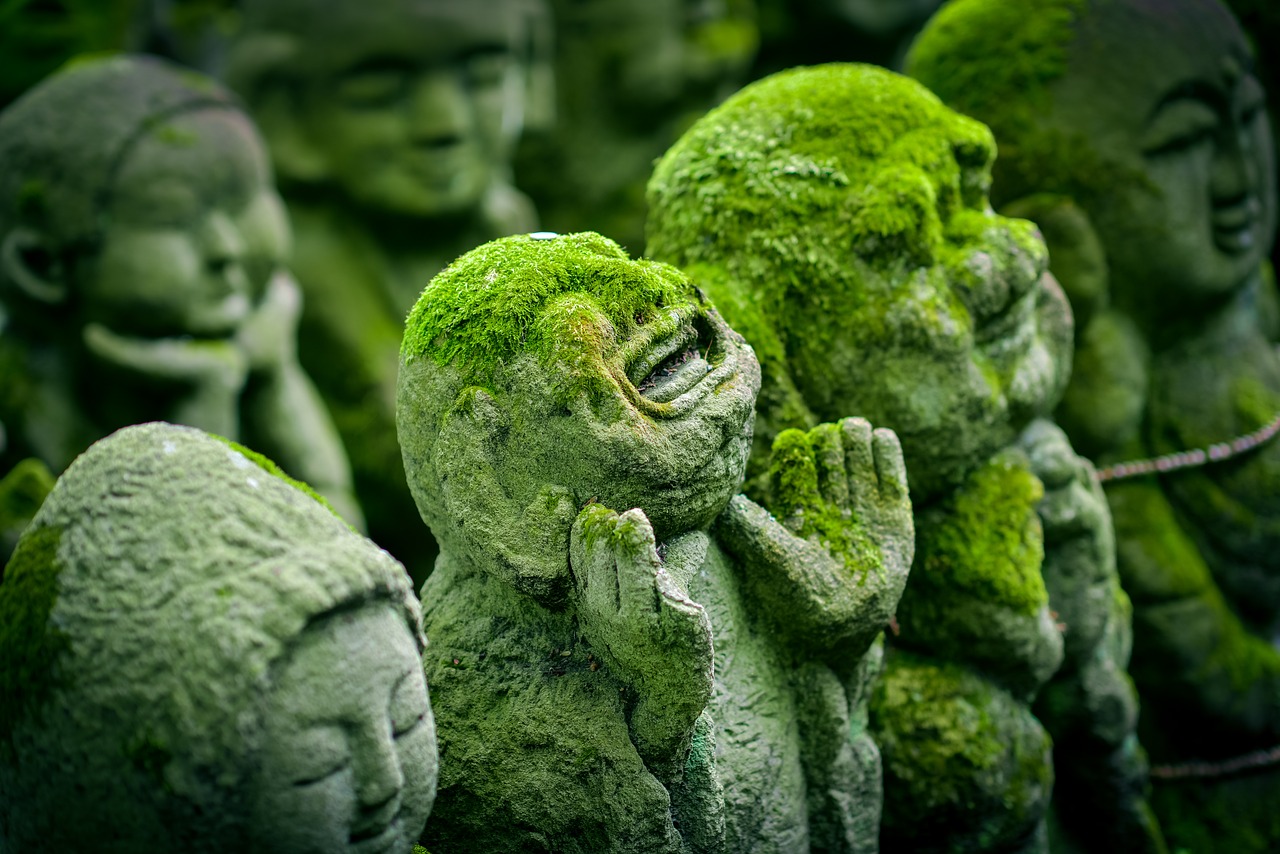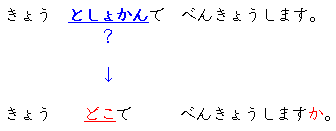![]() きょうと Kyoto
きょうと Kyoto
In this unit, we are going to focus on Kyoto, an old capital city of Japan. Kyoto became a capital in 794 and it lasted until the transfer of the government to Edo in 1868 at the time of the Imperial Restoration. Kyoto is rich with old temples and shrines, art, literature, festivals and beautiful nature. Kyoto is one of the most attractive cities in the world.
Image 1 center: Kiyomizu temple: Kyoto, Japan. CC0 Pixabay.
Image 2 (left): Bamboo Bokeh Forest, Kyoto, Japan. CC0 Pixabay.
Image 3 (right): Jizo Statues, the protector of children, women and travelers.



![]()
![]() Listening Activity
Listening Activity
Listen to each statement and decide what is being said. After you complete the activity, click on the arrow button to check if you did correct. Click play near each sentence below and listen to the sound.
|
|
|
おかねを だします。 | おかねを だしません。 |
| X | |||
|
|
|
こーひーを のみません。 | こーひーを のみます。 |
| X | |||
|
|
|
わたしは はなを かいます。 | ともだちは はなを かいます。 |
| X | |||
|
|
|
たなかさんは えを みます。 | やまもとさんは えを みます。 |
| X | |||
|
|
|
みせで CDを うりません。 | みせで CDを うります。 |
| X | |||
|
|
|
せんせいと はなしを します。 | せんせいと はなしを しません。 |
| X |
![]() TV Presentation Things You Do (わたしの まち)
TV Presentation Things You Do (わたしの まち)
You have already watched this presentation in Section A. Now, spend extra time studying this presentation (わたしの まち)before you complete the Section B Assignment.
Click presentation or click Begin below.
Here is a print version of this actvity. You will still need to use the online version to hear any audio.
![]() Reading Practice
Reading Practice
Read the following passage and then answer the questions that follow. After you have answered the questions, click on the question to see the answer to each question. Again, when you see words that you do not know yet, first try to guess their meaning.
こんにちは。わたしは たなか ひろこです。きょうとに すんでいます。きょうとは きれいな ところ(=beautiful place)です。きょうは がっこうに いきます。そして としょかんで べんきょうします。あしたは どようびです。
あしたは ともだちと てにすを します。そして、おんがくやに いきます。
CDを かいます。それから、こうえんで はしります。
| なまえは なんですか。 | たなか ひろこさん です。 |
| どこに すんでいますか。 | きょうとに すんでいます。 |
| きょうとは どんな ところですか。 | きれいな ところです。 |
| いつ がっこうに いきますか。 | きょう いきます。 |
| どこで べんきょうしますか。 | としょかんで べんきょうします。 |
| あしたは なんようびですか。 | どようびです。 |
| だれと てにすを しますか。 | ともだちと します。 |
| こうえんで なにを しますか。 | はしります。 |
The words in bold in the question are used to get information such as who?, when?, where? and how?. Some of them you already know from previous lessons such as なん, どこ, なんようび. There are, however, other question words that you have not officially learned. Try your hand at guessing their meanings. Click on the question word to see if you have accurately guessed its meaning.
| なん/なに | what |
| だれ | who |
| どこ | where |
| いつ | when |
| どんな | what kind of |
![]() Asking "yes/no" Questions
Asking "yes/no" Questions
In order to ask questions that simply ask for a yes or no answer in Japanese, we simply add か at the end of the sentence.
きょう こうえんで はしります。
きょう こうえんで はしりますか。
Yes: はい はしります。
No: いいえ はしりません。
When you want to ask a question to get information (who, when, where, how, etc.), you use an information word to ask for it, plus か at the end of the sentence.
Answer: としょかんで べんきょうします。
Now see if you can make these yes/no questions into information questions using the question word suggested. Pay attention to the particle use.
| どこ/すんでいます | どこに すんでいますか。 |
| どこ/べんきょうします | どこで べんきょうしますか。 |
| なに/します | なにを しますか。 |
| なに/のみます | なにを のみますか。 |
| いつ/CDを かいます | いつ CDを かいますか。 |
| だれ/てにすを します | だれと てにすを しますか。 |
![]() Graded Assignments
Graded Assignments
Please return to the Section 1 Tasks & Assignments folder to complete the graded assignments for Section 1, Part B.


